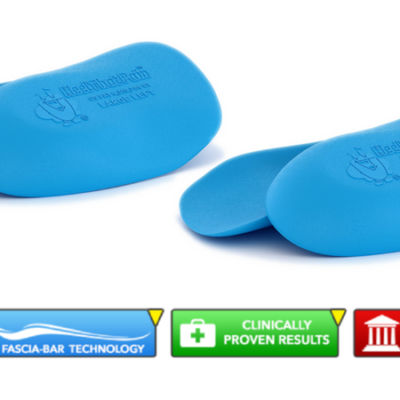Autologous Blood Injections for Plantar Fasciitis
By Noelle Ihli, medically reviewed by Dr. Kimberly Langdon, M.D.
Plantar fasciitis is most commonly treated with natural remedies like rest, stretching, the use of orthotic inserts, or medical treatments like ultrasound therapy and ESWT. A recent study published by the Lady Reading Hospital and Pak International Medical College found that autologous blood injections may also be a very effective treatment for plantar fasciitis.
Keep reading to learn more about how this treatment works, benefits and risks of autologous blood injections, how much you can expect to pay, and whether or not you’re a good candidate for this treatment!
How Do Autologous Blood Injections Work?
Autologous blood injections are used to treat a number of sports injuries, ligament damage, tendon damage, and muscle strain. Unlike PRP (platelet-rich plasma injections) autologous blood injections do not separate the blood components.
During autologous blood injections, a doctor extracts a small amount of the patient’s blood from a vein. This blood contains red blood cells, white blood cells, platelets that are rich in insulin-like growth factor (IGF-I, IGF-II), platelet-derived growth factor (PDGF) and vascular endothelial growth factor (VEGF). These growth-factor platelets help cells throughout the body regenerate, repair damaged tissue, and ultimately heal injuries in the body. By injecting this blood into the heel (which doesn’t enjoy a great deal of circulation), this whole blood with its platelets can help trigger a healing response. This type of injection is not the same as platelet-rich plasma injections, which remove different components from the blood to concentrate the platelets and factors, leaving only plasma behind.
After extracting the blood, your doctor may add an anesthetic (like lidocaine) as well as a substance like thrombin, which helps activate the platelets. He or she will then re-inject the blood into the side of the heel, using ultrasound for a guide.
Are Autologous Blood Injections Effective at Treating Plantar Fasciitis?
One important study followed 150 participants who rated their heel pain as moderate or severe, and who had suffered from plantar fasciitis pain for 12-15 weeks prior to the study. Each study participant was asked to rate their pain at 6, 12, and 24 weeks following autologous blood injections.
Incredibly, most study participants drastically improved their heel pain after the autologous blood injections, with 63% reporting zero heel pain in the weeks following the procedure.


Benefits and Uses of Autologous Blood Injections
Blood that is rich in red blood cells, white blood cells, platelets, and platelet-derived growth factor can help cells in the injured heel and arch more quickly repair scar tissue, encourage the growth of healthy tissue, and heal the injury.
Autologous blood injections are used for a wide variety of connective tissue and tendon injuries, not just plantar fasciitis — although it’s important to understand that there’s still quite a bit of speculation on exactly how the treatment works. Most experts believe that since connective tissue like tendons and ligaments ordinarily get only a small amount of blood blow, they are slower to heal than other types of tissue. Infusing a platelet-rich blood supply into the injury can help initiate a more aggressive healing response to repair the damage to the injured area.
Risks of Autologous Blood Injections
Side effects of autologous blood injections are generally very mild, and may include swelling and redness at the injection site, tenderness in the injured area, numbness following the injection, and lumpiness or a sensation of pressure where the blood was injected.
While autologous blood injections are becoming increasingly well known and used in the field of podiatry to treat conditions like plantar fasciitis, the number of studies evaluating the safety and effectiveness of this treatment are still relatively few.
How Much Do Autologous Blood Injections Cost?
Because autologous blood injections are still in the “new” category when it comes to treating connective tissue injuries like plantar fasciitis, many insurance providers won’t cover the treatments — which can be expensive.
Depending on your provider, you can expect to pay $500-$2000 per treatment. Most doctors recommend a series of injections, spaced a couple of months apart.
Who Is a Good Candidate for Autologous Blood Injections?
If your plantar fasciitis hasn’t responded to more conservative treatment methods over a period of 6 to 9 months, you may be a good candidate for autologous blood injections.
Since the surgery is outpatient, you won’t need to take time off from work or wear a boot or brace afterward. However, you should know that stretching and exercise will be off limits for about two days following the procedure.
Alternatives to Blood Injections for Heel Pain
Not ready to try autologous blood injections? Here are a few alternative treatment with similar success rates:
- Heel Seats – more than 90% success rate as reported by customers, and shown to be twice as effective as Dr. Scholl’s inserts in a double-blind clinical study.
- Ultrasound Treatments – one study revealed an average improvement of 90% in plantar fasciitis-related pain.
- Extracorporeal Shock Wave Therapy (ESWT) – patients reported a 70% improvement in heel pain after 5 weeks of ESWT in a recent study.







